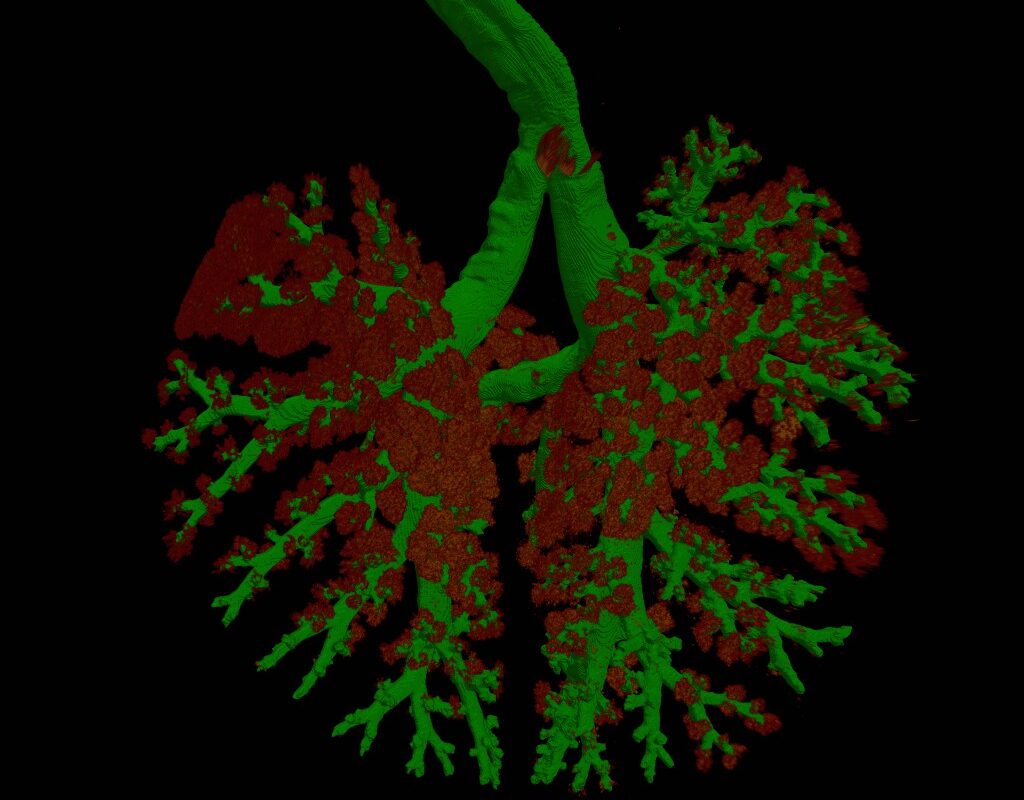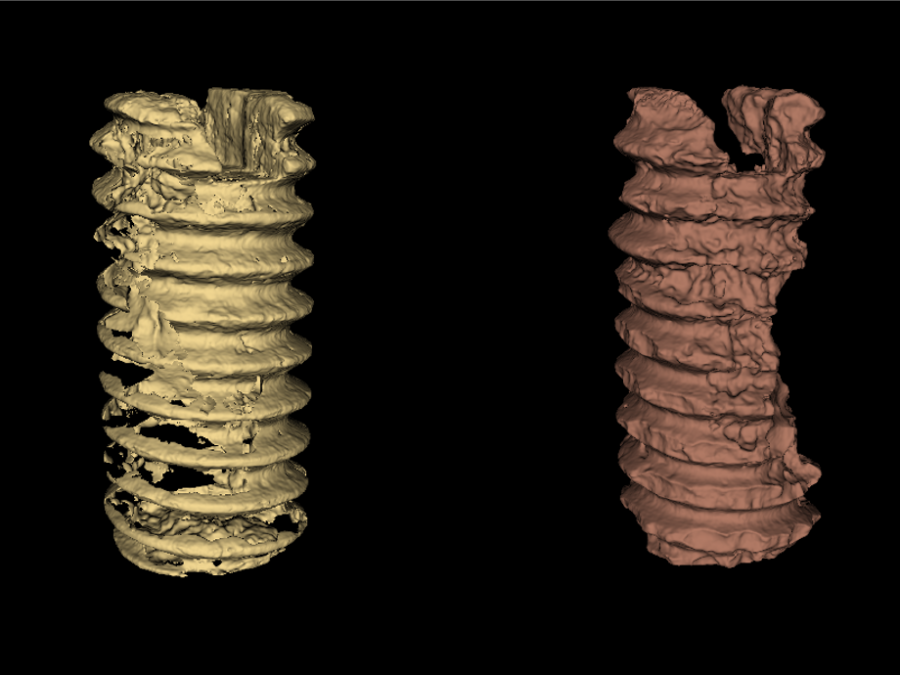Understanding lung diseases and optimizing their treatment

Understanding the distribution of nanoparticles after inhalation can lead to the discovery of novel, more effective drug delivering techniques. To this end we develop AI-based methods for semantic segmentation of the airways in non-dissected whole murine lungs, imaged with light sheet fluorescence microscopy. The analysis of airway properties in diseased lungs will furthermore shed light on the pathogenesis of common diseases such as COPD and may lead to novel therapeutic strategies.


